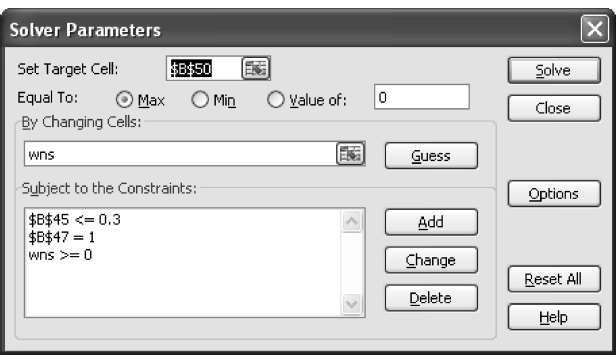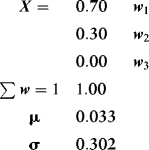Portfolio 4: Minimum Variance Portfolios with Capped Allocations
Suppose we extend our analysis of constrained optima to include restrictions on how much we can invest in certain assets. In practice, managers often cap allocations to certain asset classes so as to control their exposure to risk. Let's take as an example an allocation cap to asset 2 with a maximum of 30 percent while still restricting short sales. Solver then looks like this:

Notice the allocation constraint on asset 2 in cell B45. Solving yields:

Again, we see the impact of restricted optimizations in the form of higher risk (30.2 percent) and lower expected returns (3.3 percent).
By now, several intuitively appealing properties of minimum variance portfolios should be clear. First, the allocation weights are generally inversely proportional to the asset's risk. Second, nonzero covariances complicate risk but the intuition is unaffected. Third, the minimum variance portfolio is the left-most point on the efficient frontier. And fourth, constraints on the optimization problem do not come without a cost; for example, too high a targeted portfolio return will force the optimizer to short (hold a negative weight) in the lower-returning asset. Alternatively, too high a risk relative to the asset's return will do likewise. Restrictions, in general, force the optimization problem to locate solutions in a restricted parameter space. Naturally, this action will have implications regarding the portfolio risk. We turn to the issue of portfolio risk now.
